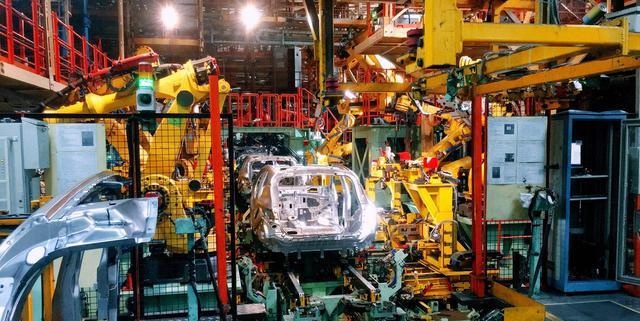Linear friction welding is welding by contacting the surfaces of two parts to be welded with each other and applying a top pressure, at the same time making the two contact surfaces reciprocate linearly at a certain frequency and amplitude to generate friction heat. It is different from rotary friction welding and friction stir welding in motion mode, and it adapts to various shapes of materials. It can not only weld workpieces with cylindrical and pipe sections, but also weld metals and plastics with square, round and polygonal sections. Its basic process is as follows: one workpiece in the friction pair is fixed by the clamp, and the other workpiece reciprocates linearly with it. Under the push of the axial feeding mechanism, the two welding surfaces contact and rub against each other. With the friction movement and axial advancement, the friction surface generates friction heat, and the surface metal gradually reaches viscoplastic state, which is deformed and extruded under the action of axial pressure. Finally, the reciprocating movement is stopped and upsetting force is applied to complete the welding.
The materials suitable for welding by linear friction welding include conventional structural steel, stainless steel, titanium alloy (TC4, TC6, TC11, TC17), high temperature alloy, intermetallic compound material, metal matrix composite material, single crystal alloy, plastic and other non-metallic materials. The comprehensive mechanical properties of the welded joint are good, and the strength, toughness and fatigue properties of the joint are equivalent to those of the base metal.

In the late 1980s, the cooperative company between Germany and Britain successfully applied linear friction welding to the manufacture of titanium alloy integral blade of aero-engine. Due to the advantages of linear friction welding in the field of integral bladed disk manufacturing, it has received great attention in the field of aero-engine in recent years and developed rapidly. GE (General Electric Company), R&R (British Aeroengine Company), P&W (American Whitney Group Company), MTU (German Aeroengine Company) and other companies have successively carried out research and developed various types of engine integral blades. The advantages of this welding method are: the strength and fatigue life of the welded joint can reach or even exceed the strength and life of the base metal; Can realize that manufacture of the whole blade disc of the hollow blade and realize the structural weight reduction; Compared with the whole forging blank and the whole bladed disk manufactured by machining, linear friction welding can save 88% of metal materials and greatly reduce working hours; The whole bladed disk made of friction line has good maintainability; He can realize the welding of double-alloy and double-performance integral blisk, further improve the service performance of the integral blisk, and at the same time reduce the weight of the rotor again.
At present, various aviation titanium alloys are the main materials of aviation development. When planetary friction welding is used, welding defects will also occur due to improper processing, mainly including: the weld edge and corner are not fused, which is mainly caused by uneven friction heat on the friction surface and different heat dissipation conditions. When there is incomplete fusion defect, slag inclusion often exists near the defect, which is caused by insufficient extrusion of oxide during friction. Preventive measures include: first, design a reasonable welding section, increase the curvature radius of the transition area as much as possible, and make the section change smoothly; Secondly, it is necessary to optimize the welding process parameters and reasonably match the process parameters such as amplitude, frequency and friction pressure.
In addition, welding cracks may occur, which generally occur between titanium-aluminum intermetallic compounds with low plasticity at room temperature and ordinary titanium alloys, while welding cracks generally do not occur in linear friction welding of titanium alloys with good plasticity. Linear friction welding occurs in friction stage and cooling stage, which is different from fusion welding. In the welding process, the joint area bears great friction force, upsetting pressure and shear force, and the material near the friction surface undergoes plastic deformation under the action of friction heat and force, and jumps over the friction surface. The higher the temperature of the material, the stronger the plastic deformation ability and the greater the plastic deformation amount. Because linear friction welding is a process of relatively rapid vibration of friction surface and rapid extrusion of plastic metal, when the plastic deformation ability in a certain area of joint can not meet this deformation requirement, welding cracks will appear, and the joint will often break or fall off. In the cooling stage, if the plasticity of the material is insufficient, cracks will easily appear under the action of thermal stress, and in severe cases, the joint will automatically break. At present, the technology has been basically mastered, and it has gradually been widely used in aviation and other fields.